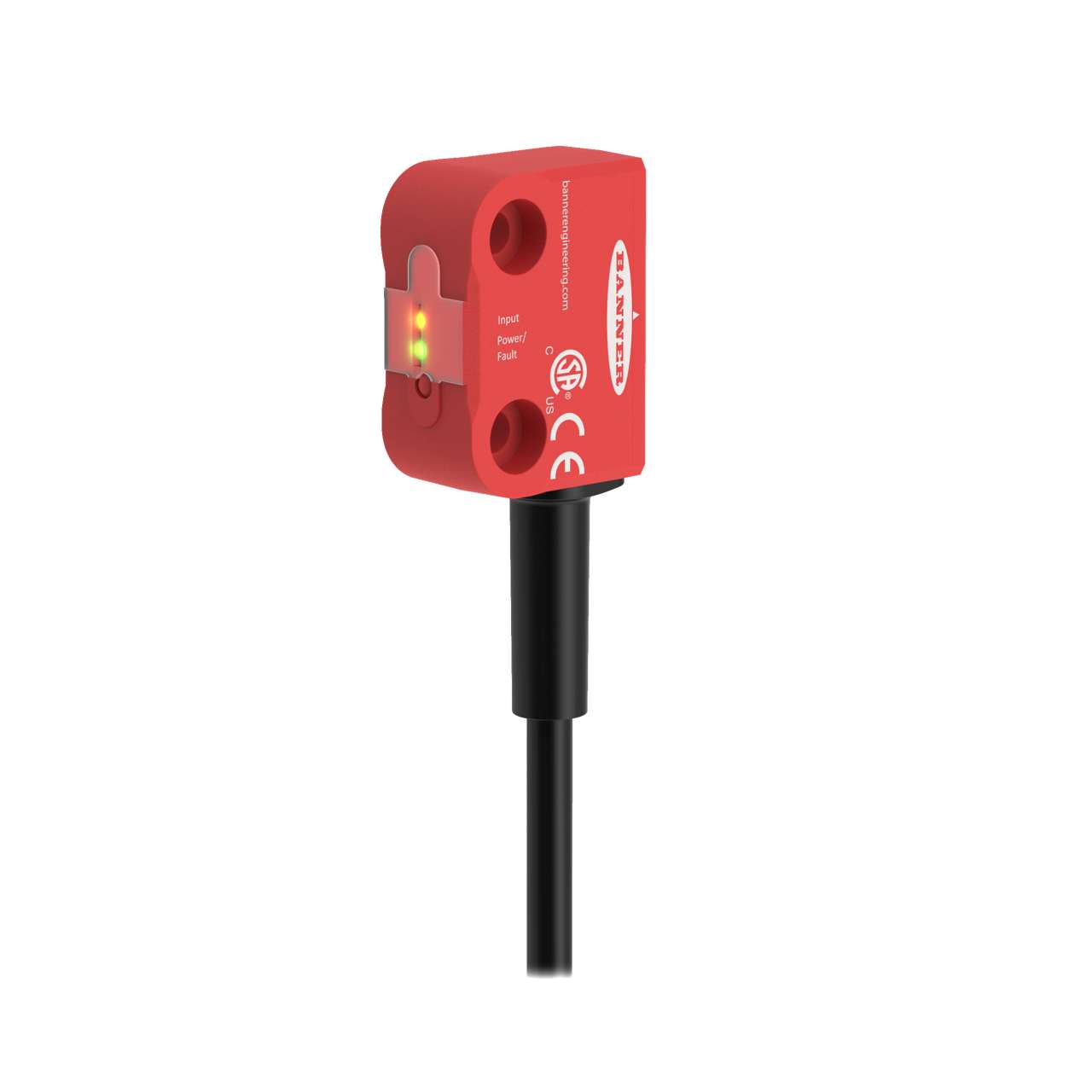Monitoring Safety Doors on a Case Packer
Guard doors separating staff from the hazardous motion of an automated case packer must remain closed while the machine is in operation. Read on to learn how SI-RF Series safety switches can be used to monitor multiple guard doors, ensuring the highest levels of safety, and making it easy to identify and resolve issues.

An automated case packer is enclosed on two sides by guard doors running the entire length of the machine. The doors separate staff from the hazardous motion of the machine while making it easy for staff to access the equipment for routine maintenance and to resolve problems on the packing line. To protect staff from accident or injury, each door must be monitored to ensure that it is closed when the case packer is started and that it remains closed while the equipment is in operation.
An SI-RF actuator with a unique RFID code is mounted to each safety door on the case packer. Each actuator is paired with a safety sensor taught to recognize the actuator’s specific RFID code. This tamper resistant design ensures that safety functions will not be bypassed.
The SI-RF sensors are wired together in a cascaded series which runs the length of the case packer. Each sensor is connected using a standard 4-wire cable with quick disconnect M12 connectors, T-adapters, and an end plug. The series will support up to 32 sensors and uses only two terminals on the safety controller, freeing space for other devices.
If a door is opened, the sensor will send a signal to the machine control system bringing the hazardous motion to a halt and an alert will be sent to the HMI via the In-Series Diagnostics (ISD) interface. In-Series Diagnostics makes it possible to notify staff when an event, like a door being opened or closed, has occurred as well as where in the cascade series the event has occurred. Issues can be found and resolved quickly with a minimal amount of machine downtime.
SI-RF Series safety switches have no moving parts and offer a high level of tolerance to misalignment, ensuring reliable performance on vibrating equipment. They have a compact, low-profile form factor that fits easily in confined spaces and their non-contact operation will not interfere with the opening and closing of the doors.
Category 4, PL e, or SIL CL 3 Safety
Used alone or in a series of cascaded devices, SI-RF Series safety switches operate at the highest levels of safety (PL e). Outputs on each sensor in the series are continuously monitored to detect any faults, including short circuits. This design eliminates the possibility of fault masking at any point in the system.
System Diagnostic Capabilities
In-Series Diagnostics (ISD) provides users with status and performance data from each sensor in a cascade chain. Data can be accessed with an HMI or similar device. Users can receive notification for a wide range of events, including the opening or closing of a door, misaligned sensors and actuators, wrong actuators being taught, and many system health attributes.
Three Levels of Tamper Resistance
Each SI-RF actuator has a non-modifiable RFID code that is taught to an SI-RF safety sensor. They are available in low code, high code, and unique code models, each offering increasing levels of tamper resistance based on the number of actuators that can be taught to a sensor at a time and over the life of the system, with unique code models providing the highest level of tamper resistance.

